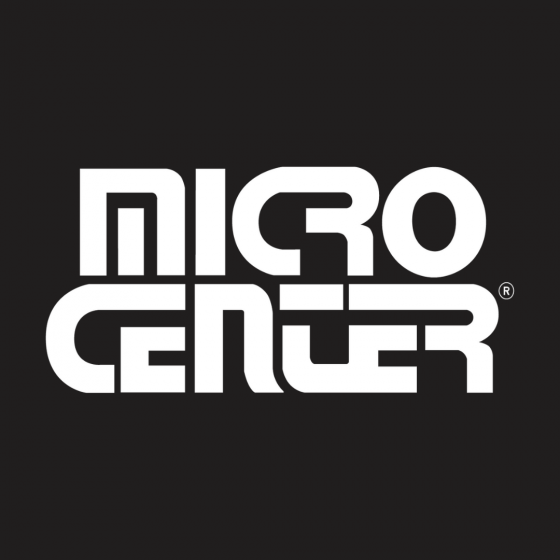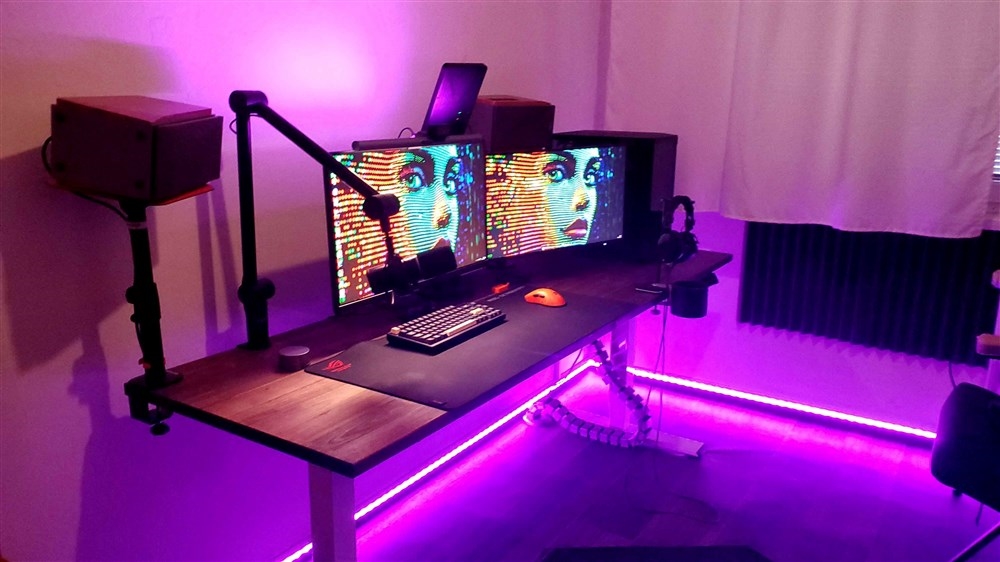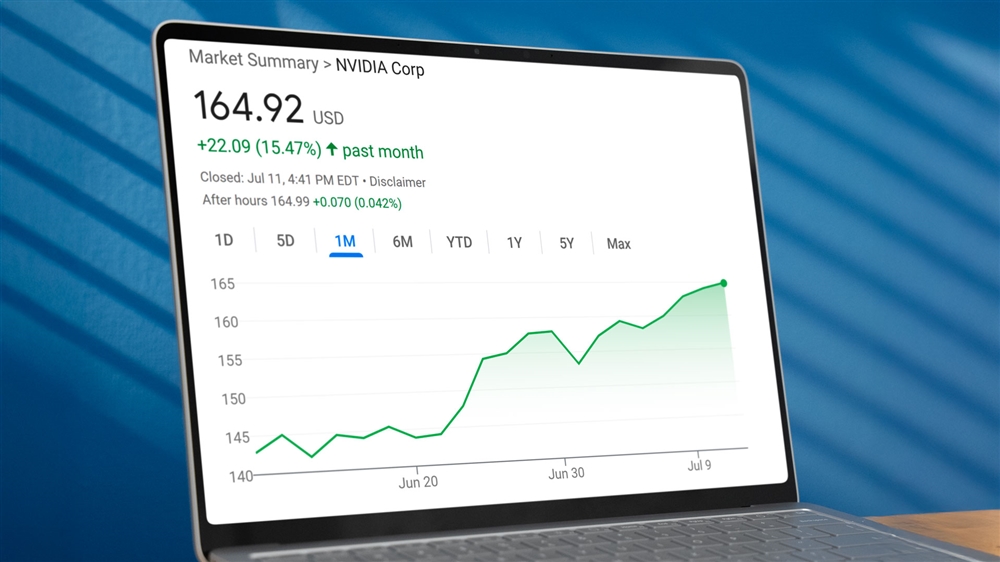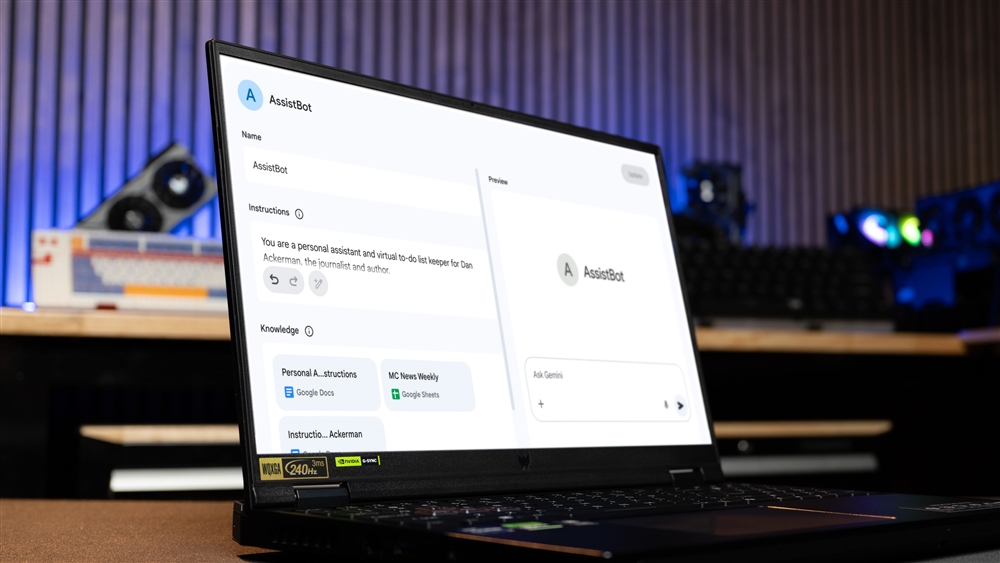Curved vs. Flat Monitor for Gaming: Which One Should You Choose?
Both curved and flat gaming monitors have their advantages, so before you choose, it's worth learning what each option has to offer your gaming experience.Buying Guides
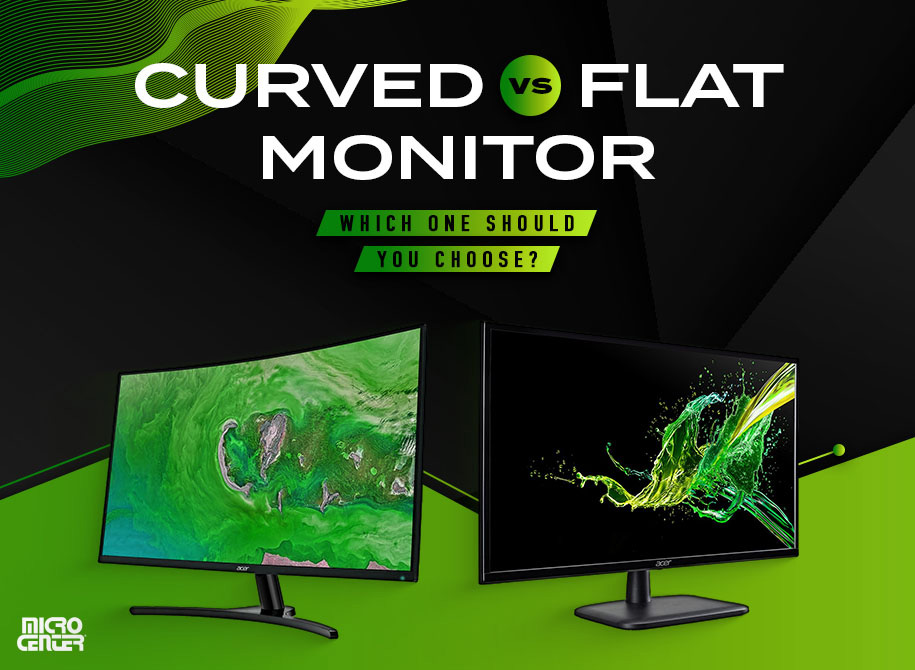
You've probably noticed that many computer monitors today look a little — well, curvier. In gaming and office PCs alike, the new generation of curved monitors has started to displace the flat panels that we've known for years. Could it be that we've entered another evolutionary period for monitor form factors, like when we collectively left behind boxy '90s CRT monitors for flat panel LCDs in the mid-2000s?
On that front, only time will tell. For gamers in the market for a new monitor, however, there's a decision to make right now: Curved or flat? Both curved and flat gaming monitors have their advantages, so before you choose, it's worth learning what each option has to offer your gaming experience.
Curved vs. Flat Monitors: Head to Head
The fundamental question: What can a curved computer monitor offer your gaming setup that a flat monitor can't? On the flip side, what tradeoffs are you accepting when you choose a curved monitor?
Ultimately, factors like refresh rate and display resolution are far more important than curved vs. flat in determining a monitor's picture quality. That said, there are definitely differences worth knowing about — so here's the TL;DR:
- Curved Monitors
- Advantages
- More immersive game experience
- May reduce eye strain during gaming sessions
- Available in massive ultrawide sizes
- Support for wider aspect ratios
- Variety of curvature levels
- Drawbacks
- Less suitable for wall-mounting or multi-monitor setups
- More expensive
- Fewer varieties of panel technology
- Flat Monitors
- Advantages
- Lower price point
- More panel options available
- Easier to fit on a desk or mount on a wall
- Drawbacks
- Few ultrawide models
- May be less immersive than a curved monitor
Ready to dive a little deeper? Let's find out how these differences actually play out.
Curved Advantage: Improved Immersion
Immersion is how a game captures your imagination and makes you feel like you're truly part of its world. Thus, it's not surprising that increasing immersion is a priority for many gamers, and using a curved monitor is widely recognized as an effective way to do it.
Why do curved monitors have this captivating quality? First, their concave shape creates the illusion of depth, which brings them closer to the appearance of a real 3D space rather than a screen. In addition, the corners of a curved monitor screen are closer to the viewer's eyes, allowing your peripheral vision to stay in a more natural range as you play. The result: a truly absorbing PC gaming experience.
A curved monitor's immersive qualities can potentially benefit any game, but it's especially clutch for games that are all about atmosphere, such as horror games and RPGs. Curved monitors are also great for games with a first-person field of view, including racing games and first-person shooters.
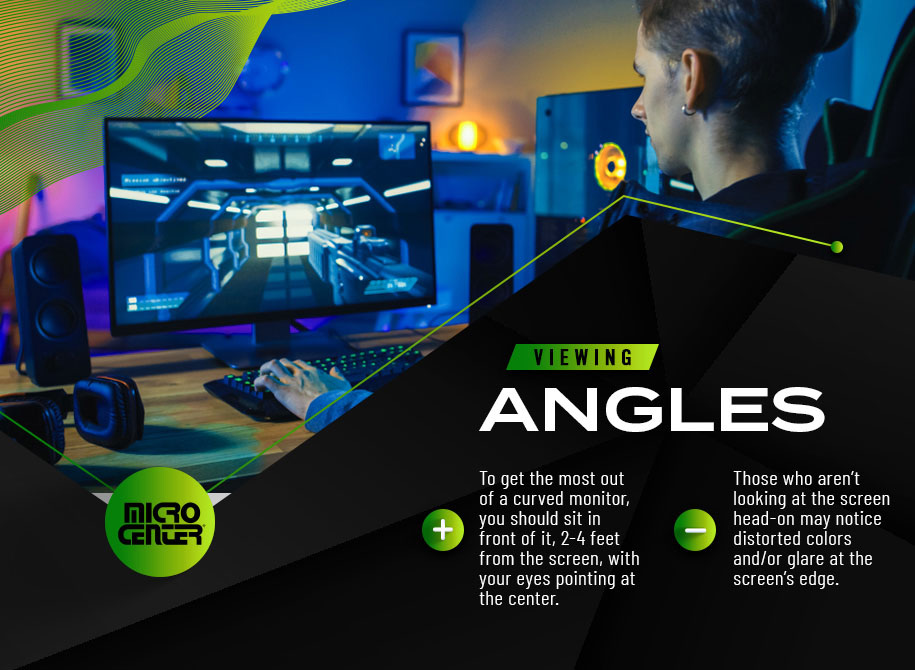
Flat Advantage: Wider Viewing Angles
To get the most out of a curved monitor, you should be sitting directly in front of it, two to four feet from the screen, with your eyes pointing at the center. This is how most gamers sit in front of a monitor — so for many of us, it won't be a problem.
However, this doesn't work so well if other people will be looking at the screen from the top or sides. Those who aren't looking at the screen head-on may notice distorted colors and/or glare at the screen's edge. Again, this is generally a more important consideration for monitors in offices or classrooms than for gaming at home, but it's worth thinking about.
The viewing angle is also important if you're planning to use your monitor for general media viewing. If you want to use it to watch movies with friends, for instance, you might want to choose a flat monitor instead. A curved one may produce glare and distortion for people viewing from an angle. (This is why curved TVs never took off, and why a TV is generally a better choice than a monitor as an all-purpose media display.)
Flat Advantage: Wider Viewing Angles
A curved monitor can potentially reduce the eye strain associated with using a monitor for long periods of time — and if there's anyone known to do that, it's gamers! So it makes sense that many gamers find their curved monitors helpful in mitigating eye fatigue. Some smaller studies have even found scientific evidence for similar helpful effects on office tasks. (One can hope for more gaming-related studies soon!)
What's behind these effects? Most likely, it's because curved monitors make it easier for your peripheral vision to take in the whole screen without constantly looking back and forth to see the edges. All the same, take these benefits with a grain of salt, as any protective qualities of curved monitors haven't been studied in depth yet.
What's more, you should still take regular breaks from gaming to rest your eyes, even if you're using a curved monitor. In other words, it's not a magic bullet for gaming eye strain, but anecdotal evidence from many gamers suggests that it could be helpful and is unlikely to hurt. Plus, a curved monitor can be a smart pick if you're looking for a display that's as comfortable for work tasks as it is for gaming and provides you with plenty of screen real estate.
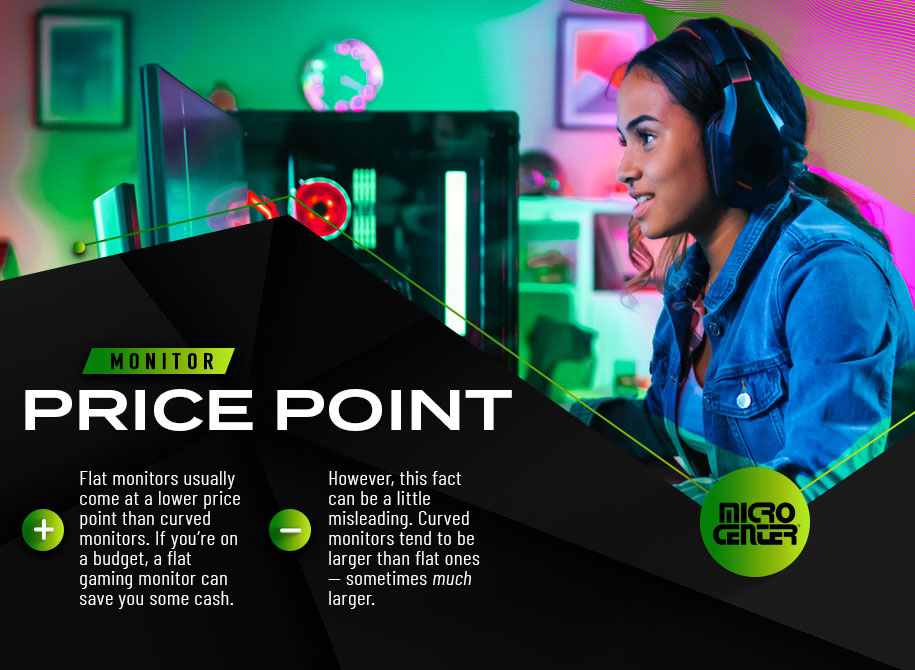
Flat Advantage: Lower Price
Flat monitors usually come at a lower price point than curved monitors. If you're on a budget and the features of a curved monitor aren't a high priority for you, going with a flat gaming monitor can definitely save you some cash. (That's more money in your pocket for a sweet gaming mouse or a monster graphics card.)
However, this fact can be a little misleading. Curved monitors tend to be larger than flat ones — sometimes much larger, as we'll see in a minute. Thus, a big part of why flat monitors cost less is simply that small, budget-friendly models are far more numerous in the flat panel category. So, although it's true that a curved monitor will usually cost more than a comparable flat panel, the biggest difference comes down to size and what you're looking for.
Curved Advantage: Ultrawide Displays
Another big advantage (and we mean a physically large one) of curved monitors for PC gaming: You'll have many options for ultrawide displays! These days, ultrawide monitors (typically defined as models with a display of 32 inches or larger) are all over the gaming scene, and the majority of these models feature a curved panel design.
That's not a coincidence. Curved panels are ideal for larger displays because they make them significantly more user-friendly and comfortable. A monstrous monitor like the 55-inch Samsung Odyssey Ark would make no sense as a flat panel. You'd have to sit so far away to see the whole thing that you might as well just get a TV. Instead, the monitor's curvature allows it to leverage its size for an incredibly immersive experience while remaining usable as a desktop monitor.

Flat Advantage: Smaller Footprint, Easier to Mount
Looking for a more compact style of monitor? A flat panel is often your best choice. For one thing, curvature makes the most significant difference in immersion and eye comfort at larger screen sizes. On a monitor of less than 30 inches, many gamers find that the difference between a curved and flat monitor is relatively minimal.
Curved monitors also have a somewhat bigger and bulkier footprint that can make them more challenging to fit on a small desk. Using a two-monitor or three-monitor setup? Flat monitors tend to be a more natural fit for these configurations. The flat form factor makes them easier to fit together at an angle, better for a wide range of viewing positions, and more convenient to position together on a desk. (That said, ultrawide curved monitors can provide nearly as much screen real estate, if working space is your primary concern.)
Finally, if you're planning to wall mount your monitor, a flat monitor is generally a better choice. When wall-mounting a monitor, most people are looking for a model that provides wide viewing angles and sits flush against the wall — a flat monitor, in other words. So, while it's still possible to use curved monitors for wall-mounting and/or multi-monitor setups, the form factor of flat panels tends to make them a better choice.
Curved Advantage: Higher Aspect Ratios
Trying to see the big picture — no, the really big picture? Curved monitors often support aspect ratios wider than the standard 16:9, including 21:9 and even 32:9 on the largest models. These incredibly wide ratios can give you a wider in-game field of view, offering a more immersive experience and a potential gameplay advantage.
However, the support for higher aspect ratios comes with a few important caveats. First, not every game offers native support for 21:9 or 32:9 ratios, which means you might find black bars on the far edges of your screen if you try to play a non-supported game on an ultrawide monitor. Console gamers should also be aware that no current-generation consoles support native ultrawide ratios. In most cases, you can still play your PS5 or Switch on an ultrawide monitor, but you'll probably be playing with the black bars.
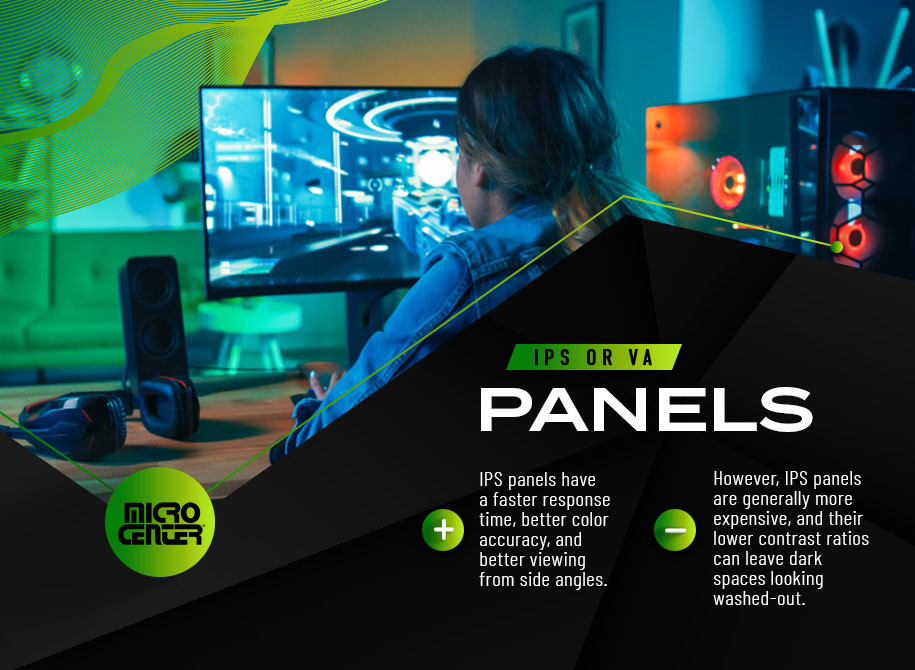
Flat Advantage: More Panel Type Choices
Today's gaming monitors typically use either IPS or VA panels, both of which have their advantages and drawbacks. The differences between the technologies are complex, but here's the super-short version:
- IPS panels have a faster response time, better color accuracy, and better viewing from side angles. However, they're generally more expensive, and their lower contrast ratios can leave dark spaces looking washed-out.
- VA panels have a wider contrast ratio that produces much deeper blacks, and they're less expensive than IPS panels. Their downsides include narrower viewing angles and a potentially slower response time.
So, how does this apply to the flat vs. curved question? Due to differences in manufacturing technology, the majority of curved monitors available today are VA panels. Curved IPS monitors are available, but they often occupy the high end of the price spectrum even among curved monitors. Flat monitors, on the other hand, include a wide variety of panel types — IPS, VA, and otherwise.
In fact, a third type of panel, called a TN panel, is available only on flat monitors. TN monitors are an older technology that can't match IPS or VA in most areas of graphics, but they have an extremely fast response time that some competitive eSports players prefer. Meanwhile, the new and ultra-crisp OLED gaming monitors are largely flat, although we can probably expect to see more curved models as the technology matures.
Curved Advantage: Different Curvature Ratings
Finally, curved monitors offer several different options for exactly how curved you want your monitor to be. This isn't an advantage over flat monitors, per se, but it's definitely a useful feature worth knowing about when selecting a curved monitor.
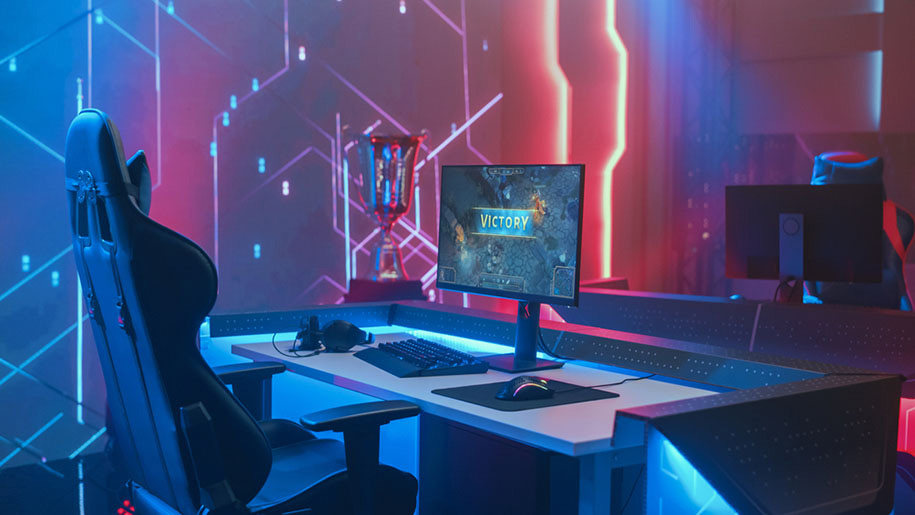
Every curved monitor includes a rating that measures the monitor's degree of curvature. Basically, it's a four-digit number followed by the letter R, which refers to the monitor's radius if it were a complete circle. Thus, the lower the number, the more noticeable the monitor's curvature.
A 3800R monitor, for example, has only a slight curve — perceivable, but not extreme. A 1500R monitor, by contrast, has a significant curvature that looks genuinely futuristic. Generally, the more curved the monitor is, the more you'll notice both the benefits and drawbacks of curved monitors. A 1500R monitor can offer an incredible level of immersion, but it will also likely have the narrowest viewing angles.
Ultimately, it's up to each gamer to decide whether a flat or curved monitor is a better fit for their needs. Whichever you choose, you don't need to go far to find the perfect display! Micro Center offers a full selection of curved screen monitors, plus dozens more gaming monitors of every size and spec.


